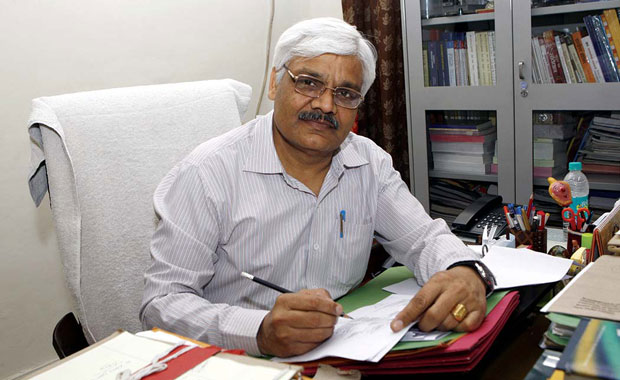"Disabled persons must be integrated into mainstream society”
Dr Dharmendra Kumar, Director Pandit Deendayal Upadhyaya Institute for Physically Handicapped
Please let us know about the programmes run by this prestigious Institute…
The primary objective through our programmes is human resource development. Towards this end, we run three bachelor degree programmes in physiotherapy, occupational therapy, and prosthetics and orthotics. The respective intake capacity in each of these is 54, 54 and 31, which means 139 are admitted to the institute each year. We are now also in a position to run a PG programme. Inspections by a Delhi University team have been carried out, and they have found us suitable. Recommendations have been made to the University Academic Council and to the Faculty of Science, under whose aegis we run these programmes. We are hoping that this year we would be able to start a delayed PG programme. Also the regulating body, the Delhi Council of Physiotherapy and Occupational Therapy is to inspect. Once cleared, we will be able to run their programmes. We also are in a position to run a Masters programme in Prosthetics and Orthotics. We are awaiting a letter from the Delhi University. We have the approval from the Rehabilitation Council of India.
We understand that these programmes are run in a comprehensive manner, taking into account social and economic factors…
Yes. Comprehensive rehabilitation involves physical, mental, economic and educational rehabilitation----the four pillars of rehabilitation. Physical rehabilitation involves physiotherapy, occupational therapy, aids and appliances, artificial limbs, wheelchairs, crutches, tricycle, canes. We want the person to be mobile. Social counseling is very crucial. We want both the family and the person to accept the disability. It is important to integrate them into society. We run an integrated primary school till class V and we integrate them with mainstream schools. We have vocational rehabilitation where we ensure skill development. We hold job fairs for placements. All these comprehensive services carried out at headquarters are extended to regional, district and satellite centres, and to the camps.
Kindly elaborate on rehabilitation services for persons of locomotor disabilities…
The idea is to help the disabled person to move himself, including the upper extremity and lower limbs. To move other things, upper extremity has to work, for instance if they want to pick a book and place it somewhere else.
What are the overall aims and objectives of the Institute, and what is the vision of the Management?
Our aim is to basically empower the person of disability and integrate him in the mainstream, including his family. We want to make such persons realize their full potential. The long term vision of the institute is that it should become a Centre of Excellence in the area of locomotor disability. As such we are targeting three groups, the leprosy-cured, ones with cerebral palsy, and the elderly, especially those with osteoarthritis. We are focused on stroke cases also which are on the rise, especially among the young due to lifestyle disorders. For congenital defects and anomalies we have manipulation therapy. We try and work on early identification and intervention for children. Earlier the problem is identified, better the outcome of our treatment.
Please let us know about the R and D programmes of the Institute…
Research and development is mainly in physiotherapy, mobility and occupational therapy. Recently we are looking at manipulation therapy and what could be effective in stroke cases. We are also looking at mirror-based therapy, where a person is required to look into a mirror and do activities that a normal person would do. We are looking at working with affected extremity. In prosthetics and orthotics, we are looking at artificial limbs research, for instance what kind of socket is more adaptable, which limb is better for walking, what should be the weight of the limb, how to reduce energy consumption. We are also looking at social research.










Comments.